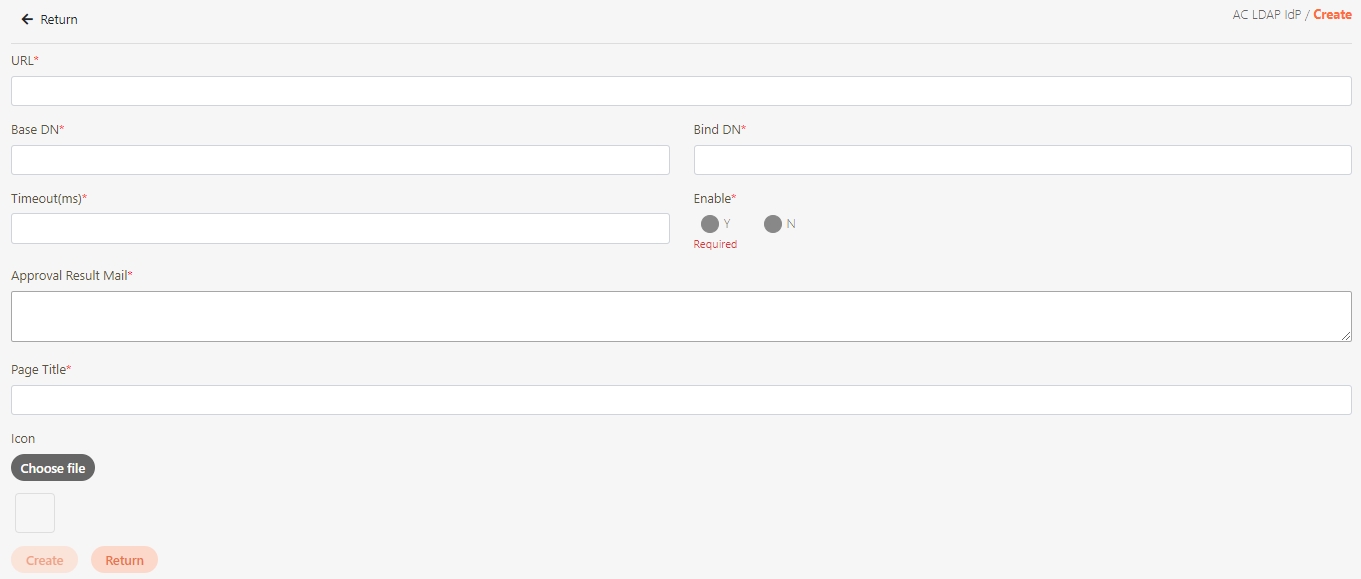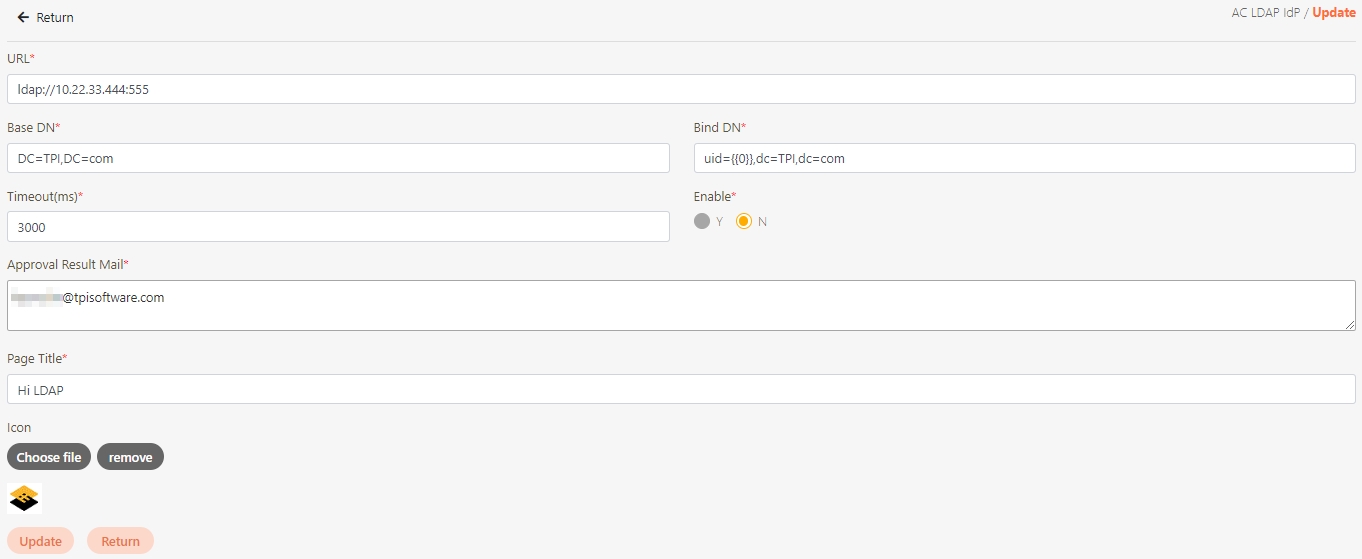AC LDAP IdP
Path: AC User Management > AC LDAP IdP
In this section, you can find instructions on how to maintain LDAP / Windows AD authentication servers.

Create AC LDAP IdP
In this section, you can find instructions on how to create AC LDAP IdP using LDAP and Windows AD. You can create an AC LDAP IdP for login.
Click Create to access the AC LDAP IdP creation page.

Fill in the data or make selections as instructed below. The fields marked with “*” are required.
URL*: LDAP / Windows AD host location, one URL can be created.
Base DN*: Specify the start or root node for the search in the LDAP directory tree.
Bind DN*: A node in the LDAP directory tree used to verify the identity of a user or application for appropriate actions in the directories.
Timeout(ms)*: Expiration time (unit: milliseconds).
Enable*: This account is active (Y) or inactive (N).
Approval Result Mail*: Specify the reviewer's email, default for manual review, but the system can also perform an auto-review.
Page Title*: Header of the login page.
Icon: Click Choose file to select and upload an identifiable LDAP image.
Click Create to save and exit.

Update AC LDAP IdP
Click on the
 icon to access the Update page.
icon to access the Update page.

Modify the desired fields, and click Update to save and exit.

Delete AC LDAP IdP
Search for the AC LDAP IdP to delete, and click on the
 icon to proceed.
icon to proceed.

A warning prompt displaying the message “Confirm Delete?” will pop up. Click Confirm to delete the AC LDAP IdP and exit.

Was this helpful?
